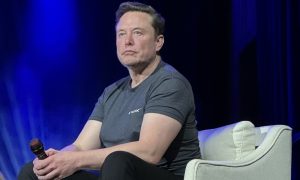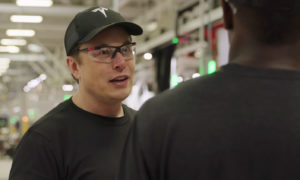SpaceX
SpaceX Starship Flight 9 recap: objectives & outcomes
Each test fuels progress. Starship Flight 9 provided critical data for future missions. One step closer to the Red Planet!

SpaceX’s Starship Flight 9 launched at 7:37 p.m. EDT from Starbase Texas on May 27, 2025.
The Starship Flight 9 launch included the B14-2 Super Heavy Booster previously used in Flight 7. Ship 35 (S35) made up the upper stage in Flight 9. Overall, 33 Raptor engines were on the booster. Six Raptor engines were on the upper stage of Starship.
Starship Flight 9 Objectives
- Demonstrate booster reuse by recovering B14-2 after separation.
- Deploy eight Starlink satellite simulators from Ship 35’s payload bay.
- Perform an in-space Raptor engine relight to test orbital maneuvering capabilities.
- Test upgraded heat shield tiles, including metallic and actively cooled variants, for improved re-entry performance.
- Achieve a controlled re-entry and splashdown of Ship 35 in the Indian Ocean.
Starship Flight 9 Outcomes
Booster Performance: Post-separation, B14-2 executed a boost-back burn to return toward the Gulf of Mexico for a planned catch or splashdown. However, the booster was lost over the Gulf of Mexico. SpaceX acknowledged that it did not achieve its planned recovery and has not specified the cause of the loss.
Upper Stage Performance: Ship 35 reached a suborbital trajectory with an apogee of 189 km. SpaceX attempted to deploy eight Starlink satellite simulators from S35. However, the ship’s payload bay door failed to open and prevented deployment.
SpaceX planned a Raptor engine relight in space for the upper stage but did not confirm a successful attempt. During Ship 35’s re-entry over the Indian Ocean, fuel leaked, causing a loss of attitude control.
SpaceX’s Conclusion
SpaceX concluded that Starship Flight 9 was a partial success. The company’s conclusion was based on the valuable data it gathered from reusing the booster, heat shield performance, and system behavior.
Starship Flight 9’s Significance
Flight 9 provided critical data to achieve SpaceX’s goal of making Starship fully reusable. Reusability will reduce the cost of missions to Earth orbit, the Moon, and Mars. Ship 35’s failure to deploy Starlink satellites revealed an issue that SpaceX would need to fix. After all, Starlink deployment is essential for Starship’s commercial viability.
Elon Musk noted that Starship Flight tests are essential steps toward human missions to Mars and eventually making life multiplanetary.
SpaceX
SpaceX Dragon to carry Axiom’s Ax-4 crew for ISS research
On June 10, Axiom’s Ax-4 mission heads to the ISS on a SpaceX Dragon capsule. It’s a historic return to space for India, Poland & Hungary.

Axiom Space’s Ax-4 mission, launched on a SpaceX Dragon spacecraft, will carry a historic international crew to the International Space Station (ISS) next Tuesday, June 10, from NASA’s Kennedy Space Center in Florida.
SpaceX’s Dragon capsule was recently photographed preparing for the Ax-4 launch. The Dragon will dock at the ISS on June 11 at approximately 12:30 p.m. ET for a 14-day mission focused on groundbreaking microgravity research.
The Ax-4 crew will be led by Commander Peggy Whitson from the United States. It includes Pilot Shubhanshu Shukla from India and mission specialists Sławosz Uznański-Wiśniewski from Poland and the European Space Agency and Tibor Kapu from Hungary. This mission marks a historic return to human spaceflight for India, Poland, and Hungary as each nation sends its first government-sponsored astronauts in over 40 years.
“With a culturally diverse crew, we are not only advancing scientific knowledge but also fostering international collaboration. Our previous missions set the stage, and with Ax-4, we ascend even higher, bringing more nations to low-Earth orbit and expanding humanity’s reach among the stars,” Whitson noted.
The Ax-4 mission’s research portfolio will be Axiom’s most extensive. It includes 60 scientific studies from 31 countries, including the U.S., India, Poland, Hungary, Saudi Arabia, Brazil, Nigeria, the UAE, and Europe. These studies will advance knowledge in human research, Earth observation, life, and biological and material sciences. Key investigations include supporting astronauts with insulin-dependent diabetes, examining microgravity’s impact on the brain, and studying cancer growth, particularly triple-negative breast cancer. Additional research will explore blood stem cells, joint health, blood flow, and astronaut readiness using wearable devices, iPhone software, and AWS Snowcone analytics.
Axiom Space’s partnerships with research organizations and academic institutions aim to deepen understanding of spaceflight’s effects on the human body, with potential applications for Earth-based healthcare. The Ax-4 mission underscores Axiom’s role in redefining access to low-Earth orbit, fostering global collaboration, and advancing microgravity research. As SpaceX’s Dragon enables this historic mission, it reinforces the company’s pivotal role in commercial spaceflight and scientific discovery.
Elon Musk
SpaceX to decommission Dragon spacecraft in response to Pres. Trump war of words with Elon Musk
Elon Musk says SpaceX will decommission Dragon as a result of President Trump’s threat to end his subsidies and government contracts.

SpaceX will decommission its Dragon spacecraft in response to the intense war of words that President Trump and CEO Elon Musk have entered on various social media platforms today.
President Trump and Musk, who was once considered a right-hand man to Trump, have entered a vicious war of words on Thursday. The issues stem from Musk’s disagreement with the “Big Beautiful Bill,” which will increase the U.S. federal deficit, the Tesla and SpaceX frontman says.
How Tesla could benefit from the ‘Big Beautiful Bill’ that axes EV subsidies
The insults and threats have been brutal, as Trump has said he doesn’t know if he’ll respect Musk again, and Musk has even stated that the President would not have won the election in November if it were not for him.
President Trump then said later in the day that:
“The easiest way to save money in our Budget, Billions and Billions of Dollars, is to terminate Elon’s Government Subsidies and Contracts. I was always surprised that Biden didn’t do it!”
Musk’s response was simple: he will decommission the SpaceX capsule responsible for transporting crew and cargo to the International Space Station (ISS): Dragon.
🚨 Elon says Dragon will be decommissioned immediately due to President Trump’s threats to terminate SpaceX’s government contracts https://5023w.roads-uae.com/XNB0LflZIy
— TESLARATI (@Teslarati) June 5, 2025
Dragon has completed 51 missions, 46 of which have been to the ISS. It is capable of carrying up to 7 passengers to and from Earth’s orbit. It is the only spacecraft that is capable of returning vast amounts of cargo to Earth. It is also the first private spacecraft to take humans to the ISS.
The most notable mission Dragon completed is one of its most recent, as SpaceX brought NASA astronauts Butch Wilmore and Suni Williams back to Earth after being stranded at the ISS by a Boeing Starliner capsule.
SpaceX’s reluctance to participate in federally funded projects may put the government in a strange position. It will look to bring Boeing back in to take a majority of these projects, but there might be some reluctance based on the Starliner mishap with Wilmore and Williams.
SpaceX bails out Boeing and employees are reportedly ‘humiliated’
News
SpaceX marks 500th Falcon launch with Starlink 11-22 Mission
The Starlink 11-22 mission marks SpaceX’s 500th Falcon flight & 50th Starlink launch of 2025. Will SpaceX IPO Starlink next?

SpaceX celebrated its 500th Falcon rocket launch with the Starlink 11-22 mission, a midweek flight from Vandenberg Space Force Base in California.
The milestone was achieved with a Falcon 9 liftoff on Wednesday at 4:40 p.m. PDT (7:40 p.m. EDT, 2340 UTC). It also coincided with the 15th anniversary of the first Falcon 9 launch, underscoring the company’s dominance in the commercial space sector. The Starlink 11-22 mission, SpaceX’s 50th Starlink launch of 2025, highlights the company’s focus on expanding its satellite internet constellation.
Earlier this week, Elon Musk revealed SpaceX anticipates $15.5 billion in revenue this year, surpassing NASA’s $1.1 billion budget for 2026.
SpaceX’s reusable Falcon 9 and Falcon Heavy rockets have driven down launch costs, securing a significant share of the global launch market. In 2024, the company set a record with 134 Falcon launches, making it the world’s most active launch operator. SpaceX aims to surpass this with 170 launches by year-end, fueled by growing demand for satellite deployments. The Starlink constellation is a key revenue driver for SpaceX and remains central to these ambitions. Musk has hinted at a future public offering for Starlink without specifying a timeline.
Beyond Falcon rockets, SpaceX is advancing its 400-foot Starship system, which Musk envisions as critical for Mars missions. The company’s cost-effective launch services and satellite communications have outpaced traditional space agencies, leveraging commercial demand to fund its interplanetary goals. While NASA focuses on deep space exploration, SpaceX’s revenue model thrives on frequent, reliable launches and Starlink’s expanding reach.
“I would like to thank everyone out there who has bought Starlink because you’re helping secure the future of civilization, making life multi-planetary, and helping make humanity a space-exploring civilization,” Musk said during his Road to Making Life Multiplanetary discussion.
The 500th Falcon launch marks a pivotal moment for SpaceX, reflecting its transformative impact on space access. As the company pushes toward record-breaking launch targets and multi-planetary aspirations, Starlink’s growth continues to fuel its vision, positioning SpaceX as a leader in shaping the future of space exploration and connectivity.
-

 News1 week ago
News1 week agoTesla to lose 64 Superchargers on New Jersey Turnpike in controversial decision
-

 News2 weeks ago
News2 weeks agoTesla gets major upgrade that Apple users will absolutely love
-

 News2 weeks ago
News2 weeks agoTesla teases new color while testing refreshed Model S, X
-

 Elon Musk2 weeks ago
Elon Musk2 weeks agoTesla investors demand 40-hour workweek from Elon Musk
-

 Elon Musk6 days ago
Elon Musk6 days agoElon Musk explains Tesla’s domestic battery strategy
-

 News2 weeks ago
News2 weeks agoTesla Cybertrucks join Jalisco’s police fleet ahead of FIFA World Cup
-

 News2 weeks ago
News2 weeks agoTesla rolls out new crucial safety feature aimed at saving children
-

 News2 weeks ago
News2 weeks agoTesla’s apparent affordable model zips around Fremont test track


















